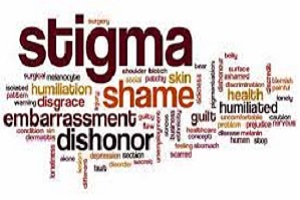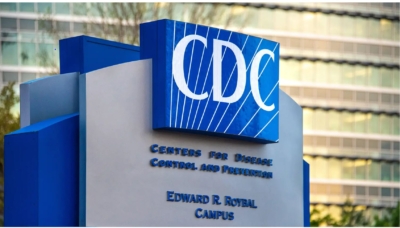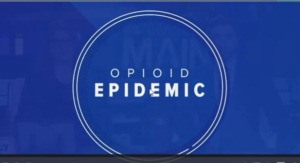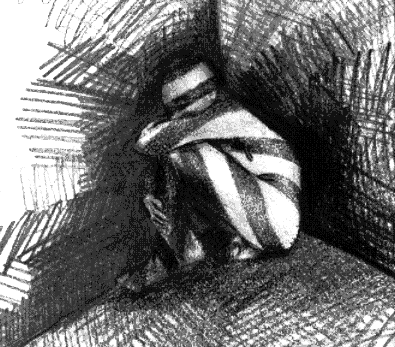Although the disease of addiction is now obscured by the dark cloud of the Covid-19 pandemic, it continues to tear America apart. It’s a relentless killer, fed by anxiety and uncertainty, and enabled by the attitudes of the health care providers who are supposed to be caring for people with it.
I led two lives for more than a decade: I worked as a physician, caring for the sick and suffering. I also struggled with addiction, using cocaine and other drugs to manage post-traumatic stress — a consequence of surviving the 9/11 attacks on the World Trade Center. I loved my work, but the drugs kept me alive, managed my pain, and allowed me to function.
This duality showed me how people with mental illness and substance use disorders are treated by my colleagues in the health care system. I saw their judgements and their scorn, and I saw how U.S. drug policy was harming people right before my eyes.
The term stigma comes from Latin and Greek words that mean a mark on the skin, often made by a hot iron. In ancient Greece, this mark identified criminals, slaves, and outcasts — people who couldn’t be trusted, were dangerous, and had to be avoided at all costs
The stigma of addiction comes from the negative feelings that many health care professionals harbor for people struggling with substance use disorders, and their beliefs that poor personal choices, “moral failing,” and defects of character are to blame for the disease. These feelings and beliefs mirror those of the general public.
Health care workers may shame people with addictions more than others do. A study examining primary care physicians’ perspectives on the prescription opioid epidemic found that most were unwilling to work closely with, or have marry into their family, a person with an addiction to prescription pain medication. The majority also believed that individuals with an addiction are dangerous and employers should be allowed to deny them employment, something that happens every day across America.
Should a person with diabetes who struggles to control their blood sugar be denied the right to work, to provide for their family, or to pursue their life’s purpose? What about the person with asthma who smokes, or the person with heart disease who eats an abundance of fatty foods?
A recent study exploring emergency physicians’ attitudes toward patients with substance use disorders found that the majority had lower regard for patients with substance use disorders than for patients with other conditions affecting behavioral health. Among physicians participating in the survey, only 10% agreed that they “enjoy giving extra time to patients like this.” These physicians found it more rewarding to treat patients with obesity, diabetes, trauma, and even those with COPD who smoke.
Health care professionals should know better, and do better, but many don’t, even though they have pledged to “do no harm or injustice” to those they serve.
Stigma violates the right of people with addictions to be human, strips us of our dignity, and says to us that we have no value. It evokes feelings of shame so deep they are hard to know unless you’ve experienced them. This isn’t the kind of shame that guides us or tells us we’ve made a mistake. It’s toxic shame, the shame that tells us we are the mistake — something those of us with this disease come to believe. It tells us that we’re never safe and keeps us silent, hiding and alone, unvalued members of the human tribe. And that’s how many of us with this disease die: hopeless, spiritually empty, and alone.
Our health care systems have weaponized stigma in many forms, and it helps fuel America’s crisis of addiction.
The U.S. has waged its so-called war on drugs for decades. It has failed by every measure. Fueled by the iron law of prohibition and archaic drug policy, it was never really about drugs but always about controlling people — especially people of color.
In the past two decades, more than 750,000 lives have been lost to drug overdoses. The life expectancy of Americans has decreased and the number of people in prison for drug offenses has increased more than 1,000%. We have criminalized a disease and punish the people who live with it, not just in prisons and jails but also in our health care systems.
The policies that drive the war on drugs and that dictate how the health care system cares for people with substance use disorders are deadly. They drive people with addictions into the shadows, where they hide to survive. It’s a place I know well, as do many other health care professionals. Doctors, nurses, and other health care workers have higher rates of substance use disorders than the general population — in some specialties, much higher. They are also more likely to have mood disorders, burnout, and compassion fatigue, and die from suicide.
People who use drugs are marked and judged and confined to cages, cut off from each other, their families, and the connections that can help them heal.
People don’t die from overdoses. Though that cause may be listed on their death certificates, they die from trauma and pain, and they die from stigma and the isolation and self-harm that follows.
Restoring and maintaining supportive human connections between people with addictions and those able to help them can lead to recovery. This starts with facing stigma head on. I’m not talking about more buttons and posters, public relations campaigns, or storytelling. These do little to shatter the stigma that fuels the discrimination that takes lives. I’m talking about taking action to deconstruct the harmful policies that are the framework for a system that does great damage to those it claims to serve and to those working in it.
Addiction is a complex disease, and recovery from it is equally complex. There are many paths to improved health and recovery. It’s not just about abstinence as the gold standard and Alcoholics Anonymous or Narcotics Anonymous as the best way there. Any positive change should be celebrated. That might mean the cessation of drug use, but it might not. Sometimes the first step is using less of a drug, or using a safer drug, or using a drug in a safer way. Missteps should draw increased support, not punishment or isolation. More drug and alcohol treatment, medication-assisted therapy, and naloxone distribution are all steps in the right direction, but they will never be the solution to the addiction crisis.
Policing patients with contracts, pill counts, prescription drug monitoring programs, and urine drug screens do little to help people with addictions. They serve the system, and those working in it, not the people who seek compassionate care for a disease.
Combating stigma within the health care system is vital to solving America’s overdose crisis and improving the lives of those in recovery and those who continue to struggle with addiction. If we continue to rely on flawed drug policy and weaponize stigma, the overdose epidemic will continue to surge. The medical establishment, including professional boards, professional health programs, and medical groups and hospital systems, must take the lead and dismantle the policies that fuel stigma and punish patients and health care professionals for being human.
Dismantling stigma and the policies that fuel it will take sustained and unified efforts across health care systems. Important first steps are addressing the language clinicians use when caring for people with addictions, better professional education about addiction for clinicians, integrating people with lived experience with addiction into systems of care, and empowering them to help guide the policies and practices used each day for encountering and treating people with addictions.
Health care professionals must use their voices to advocate for improved care for people with addictions, including their colleagues with substance use disorders. This includes advocating for compassionate drug policy based on science and expanding access to the evidence-based strategies proven to work. This means making harm reduction a priority.
Addressing stigma and the diverse harms it delivers must be another priority. It will require reimagining the regulation and distribution of medications for substance use disorders and overdose. The current system is littered with barriers that reflect the belief that people with addiction don’t deserve life.
Health care professionals and policymakers need to rethink and reshape the Controlled Substances Act, legislation signed into law in 1970 that was less informed by science and more about waging a war on people. In its current form, the act drives the criminalization of addiction and the stigma that follows. It also deters health care professionals from treating those with this disease. Fear of surveillance, prosecution, and loss of license and career are powerful forces no practitioner can ignore.
Our nation also needs a central acting guiding force, an agency whose priority is protecting the health, well-being, and rights of people who use drugs and those in recovery. That can help remove people with addictions from the criminal justice system, a place where no disease should ever be managed.
Another priority is addressing the discrimination faced by people with substance use disorders, including health care professionals who struggle with this disease. They must be treated with the same care, compassion, and science used to treat any person with any disease. That currently isn’t the case. If health care professionals can’t address the stigma they direct towards their colleagues with addictions and give them high quality care, they won’t be able to do it for their other patients and will continue to fail when it comes to managing the disease.
Unless we begin to value the human rights and dignity of people with substance use problems and those in recovery, and continue to treat addiction as a mark of disgrace, we will never find a path forward for truly ending the war on drugs and the disease of addiction will continue to tear America apart.
Sean Fogler is a physician in recovery and a co-founder of Elevyst, a public health consulting group.








Leave A Comment